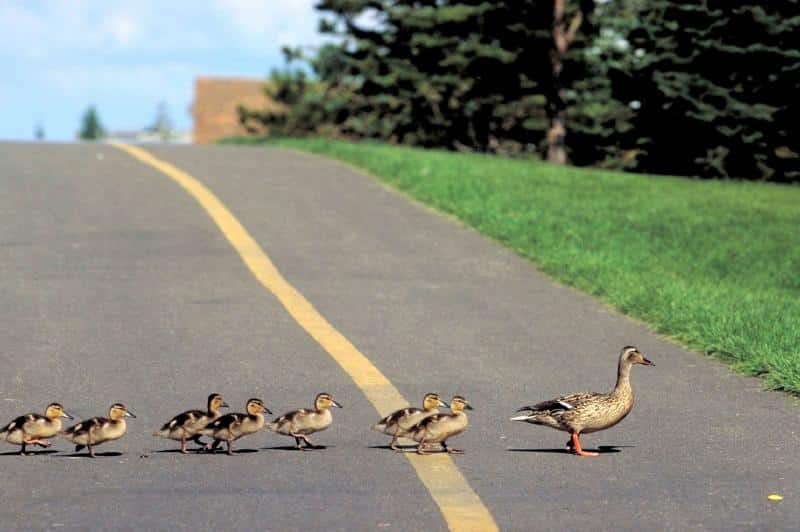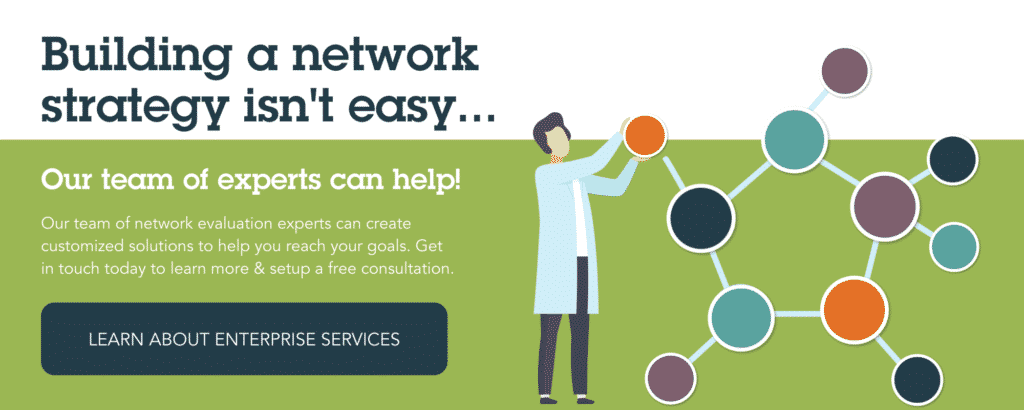
The First Follower: What Ducklings Taught Me About Building a Network
What can a freeway, seven ducklings and a construction worker teach you about Network Leadership? To my surprise, last year they all taught me quite a bit!
Last year, my morning commute from Boulder to Denver included a part of the highway that Coloradoans used to call “the mouse trap” – a bottleneck of writhing concrete pathways all merging into one giant four lane highway heading south. Traffic is swift, people shift lanes, and you have to pay a lot of attention to the cars in front of you. Which, on one morning, I wasn’t. Something abnormal caught my eye. Going 50mph down the on-ramp between US-36 and Interstate-25 I looked down to the right-hand shoulder and saw a mother duck with seven tiny ducklings waddling behind.

They were on a mission. Mother duck had decided that she and her ducklings were going to ditch the concrete jungle for a real river by crossing two lanes of traffic right where US-36 and I-25 meet. The trouble was – the drivers of the cars above this duck family were focused on safely merging into the 4 lanes of the big Interstate… and no one seemed to be stopping.
Unfortunately, not all the drivers around me noticed the duck family walking right along the edge of the shoulder, coming dangerously close to the wheels of the two-ton cars rushing by. And one unknowing driver didn’t notice when they drove right over the mother duck – leaving a shower of feathers in the air and seven little ducklings scrambling to get back against the concrete wall on the far side of the shoulder. And I saw it all.
As network leaders, we often find ourselves out in front with one foot off the cliff, taking the lead on our own in the moment… for example pulling off the side of the road to do something about the ducks. Case in point, as if on autopilot, I found myself starting to move across the lanes of traffic and over to the shoulder myself.
Once there, my pace slowed to a crawl and I drove slowly watching the ducklings in my rear-view mirror. I would cringe as they came closer and closer to traffic – the way they were behaving they were headed for the same fate as their mother! But every once in a while, a car had loud enough wheels and was moving fast enough that it would scare them to safety up against the concrete divider wall again. I finally came to a stop and began assessing the safety of the situation. Traffic had slowed considerably because the blessed bottleneck of the mouse trap (please note -this is the only time I will say a blessing for the mousetrap), and I saw my chance to get out of the car and see if I could do something.
But just as I reached to open the door, the ducklings lost their patience and turned to walk directly in the path of an oncoming construction truck. This was it – I jumped out on my own and when I did, I saw that the truck had come to a screeching halt. The workers all looked out the windows down onto the cement…. looked up at me, and then one of them jumped out.

Now we were two. I saw him slip his baseball cap off his head and begin to scoop up ducklings, I grabbed the two a couple of yards ahead of me. The other traffic noticed a commotion and stopped. Pretty soon the construction worker and I were out in front of the whole highway – stopping the flow, diving here and there catching ducklings, and working together to scare them out from under cars (I had taken the hat over while he shook his arms at them).
I had six of the seven in his hat in my hands… and then the first car came screeching around us on the shoulder, and then another, and another and we realized it was no longer safe. We had to let the last little one – which was hiding under a car – go. I quickly told him that I would take the ducks to a wildlife rehabilitation center, we thanked each other, and we both made our way swiftly back to our cars.
Doing this encouraged the cars which had stopped to begin slowly making their way – but they were reluctant… they had seen what happened… they knew there was one left. But they also knew the commuters wouldn’t wait, the whole highway was waiting behind us. Feeling defeated but decided, I turned to hurry back across the lanes of traffic to my car. As I did, I could sense something moving behind me and when I looked back, I saw an old black car coming across the lanes of traffic as if following me. The man inside was HERDING that last little duckling right to where I could catch it.
I did.
When I got to my car, I was shaking like a leaf. I dumped the contents of my purse on the floor, dropped the hat full of ducklings into the purse (so they wouldn’t be running all around the floor of my car), and considering that I had a day full of meetings, I took one big deep breath, started up my car, and went to work. When I arrived at Colorado Health Institute later that morning, the ducklings were immediately met with an office full of people happy to make them as comfortable as possible. In the afternoon I took them in their little cardboard box habitat to Greenwood Wildlife Refuge in Longmont, Colorado.
So, what can this story teach us about network leadership? Who was the hero of the story? It wasn’t me… it was the first follower and all who came after… The men who stopped their construction truck and started grabbing baby ducks (and unknowingly donating their baseball cap to the cause); it was also the other people who stopped in front of the whole highway to make it safe for us to catch the ducklings; the person who didn’t give up on the last little one and cut across that impatient traffic to shepherd it to safety; my colleagues who spent a day letting the peeping of little ducks interrupt their meetings; and the people at Greenwood Wildlife Rehabilitation Center who took the ducklings in, and raised them until they were ready to be released back into the wild – NO WHERE near a highway of any kind.
When I jumped out of my car, I acted as an individual… the moment the first follower – the construction worker – joined me, he transformed me into a leader, and together with the others there that day we became a network, a community, and a movement with a mission. Not everyone is willing to be the first to jump out of a car to save a duck. We don’t all have to be the first to stand up, and we should never subject ourselves to dangerous highway traffic without a full assessment of the situation. But if we remember the importance of the first follower in creating a movement – we are one step closer to harnessing the power of collaboration and community to change the world for the better! The next time you see someone proverbially “jump out of their car” and take a risk to make positive change, don’t be afraid to pull over and follow – you’ll be the one creating a movement!






